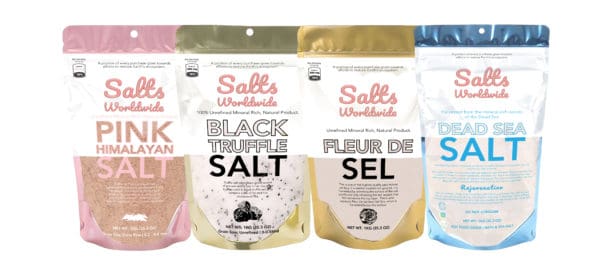How Much Iodine Is in Himalayan Salt?
How much iodine is in Himalayan salt? Even those who are well educated in the subject are often not clear about it. In this article I will discuss the topic and give some simple, easy to understand facts about this mineral.
Iodine is found naturally in water and in the soil. The iodized salt industry actually uses iodine from sea water as an ingredient in order to give it a pleasing taste. As a result, the iodine content of salt is far higher than you would get in sea water.
Iodine is found in abundance in the seas. This is because iodine acts as a natural anti-coagulant, preventing wounds from bleeding and infections from forming. The iodine in sea water is highly absorbable into the bloodstream and used by the body for a variety of purposes. This concentration of iodine is much greater than that found in sea salt.
The sea water can be ionized and be purified to make salt. The levels of iodine in the ionized salt may be lower than that in natural sea water, but it still contains iodine in the form of iodine compounds.
Iodine is more commonly known as a trace mineral, and sea water is not normally used to make sea salt. Natural sea water has a lower concentration of iodine than the sea water you find on the beaches, which means the sea water that is used to make sea salt may not contain as much iodine as you expect. If you have purchased salt that contains trace amounts of iodine, you should be aware that it is derived from sea water.
The salt industry has made use of sea water to make the salt they use in most products. They use this sea water not only to make sea salt, but also sea vegetable oil, and numerous other products, including paper and wood products.
In order to make the sea salt, sea water is heated in the traditional manner. Many people confuse this process with the use of a reverse osmosis filter. The salt industry has already removed any iodine from the water and therefore you are left with traces of iodine in the salt.
Sea water is processed using a number of methods to increase the concentration of iodine. One method that is used extensively is evaporation. This increases the iodine concentration.
Evaporation increases the concentration of iodine in sea water. Ionized sea water can also be used, but it does not contain the same concentration of iodine that is found in the sea water.
Another method used to reduce the iodine concentration in sea water is ionization. Ions are combined with chemicals and blasted into the water. This process is very expensive, so it is not usually used in large scale production.
The iodine content of sea water is the highest in the Himalayan region. It is found in abundance in such places as India, Nepal, and Tibet. However, there are a few places where it is also found in very small concentrations, such as in Turkey and Russia.
Himalayan sea salt is perfect for those who love the taste of sea salt and wish to take advantage of its availability. It is much more concentrated than sea water and is safe for those who are on a low iodine diet.




